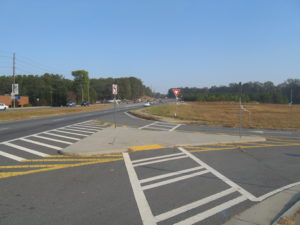 Last year, the Georgia Department of Transportation revised its regulations for driveways and encroachments into state right-of-way. Much of the manual has not changed. However, some of the revisions the state has made may affect your project planning and cost:
Last year, the Georgia Department of Transportation revised its regulations for driveways and encroachments into state right-of-way. Much of the manual has not changed. However, some of the revisions the state has made may affect your project planning and cost:
- Driveway spacing criteria has been revised to require driveways to be farther apart. The revisions apply to the spacing of offset driveways on the opposite side of the street.
- The spacing requirement for signalized intersections has increased from 1000-ft to 1320-ft in urban areas and has doubled from 1320-ft to 2640-ft in rural areas.
- If you wish to remove dirt from the right-of-way in front of your property, GDOT can either set the price per yard or ask that you haul it to a location they specify. The previous version of the manual set the compensation price at $1.00/cubic yard.
- More detail is required for plan submittal to show billboards. Also, tree inventories are required if tree removal is proposed in the right-of-way.
- For deeding of right-of-way for road improvements, more information is required to show a clear title, including preliminary and final title reports. These must be furnished by the applicant proposing the road improvements.
Having access to a proposed development is a key determinant in whether a project is feasible and can move forward to examine other issues of feasibility. Increased spacing of driveways and traffic signals could cause significant access challenges for some sites, possibly rendering them unusable. Site circulation may be affected for sites where access is not an issue.
The subjectivity of GDOT compensation terms for cut in the right-of-way could negatively affect project cost and should be considered in the planning stages of a project. Also, additional project design costs will likely result from having to identify billboards and inventory trees on plans as well as providing the necessary documentation to show a clear title for deeding of right-of-way.
Your project civil engineer should be aware of these requirements and be able to help you navigate through them. However, engaging the professional engineer in the early stages of project planning may prevent the new regulations from being a stumbling block later.